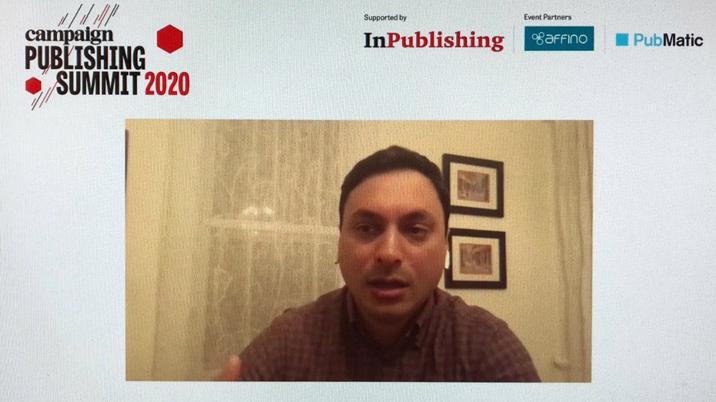
This year, The Economist has seen a 6.3% increase in digital subscriptions and a 7% increase in social media followers.
Advertising might have been hit, but the two mega-stories of 2020, allied to an increasingly customer-centric mindset has resulted in strong reader revenues.
Chief Product Officer Deep Bagchee was outlining some of the things that have worked well for the title this year, at yesterday’s Campaign Publishing Summit.
These include:
1. Going big on the big stories: Covid and the US election were met with loads of new content, including free newsletters, data visualisations and subscriber only virtual events. Their free-to-access election forecasting model generated the highest site traffic of the year. They also dropped the paywall at times, for instance on the day they endorsed Joe Biden, as a successful subscriber recruitment tactic.
2. Making the introductory offer less generous: The long-standing ‘12 issues for £12’ has been shelved in favour of ‘50% off for the first 12 weeks’. The take-up might be lower but the retention is higher.
3. Focusing on retention: Increasing the value of an Economist subscription by continually adding more things to the package is a business priority, with the goal of increasing retention through deeper engagement.
As part of the retention efforts, would-be cancellers are channelled into a live web chat or phone conversation with well-briefed customer service agents armed with a range of retention options, and this has proved successful at reducing churn.
4. Taking social media seriously, especially LinkedIn (12m followers) and Instagram (5m followers): The brand is working hard at producing engaging platform specific content and scheduling it for optimum impact, not so much because social media drives direct conversions, but because it’s important to be part of the conversation.
In the Q&A that followed his presentation, Deep expanded on his product vision. In the future, he expected increased focus in three areas: i) improving the core offering; ii) building better customer journeys; iii) tailoring content for younger cohorts of readers who have different content consumption habits.
The Economist regularly features near the top of ‘most trusted media brand’ polls and this trust is subscription gold. It is the job of Deep and his team to make sure that all the various touchpoints are optimised and that The Economist remains at the heart of the conversation, wherever it’s taking place. And… it looks like they’re doing a pretty good job.












